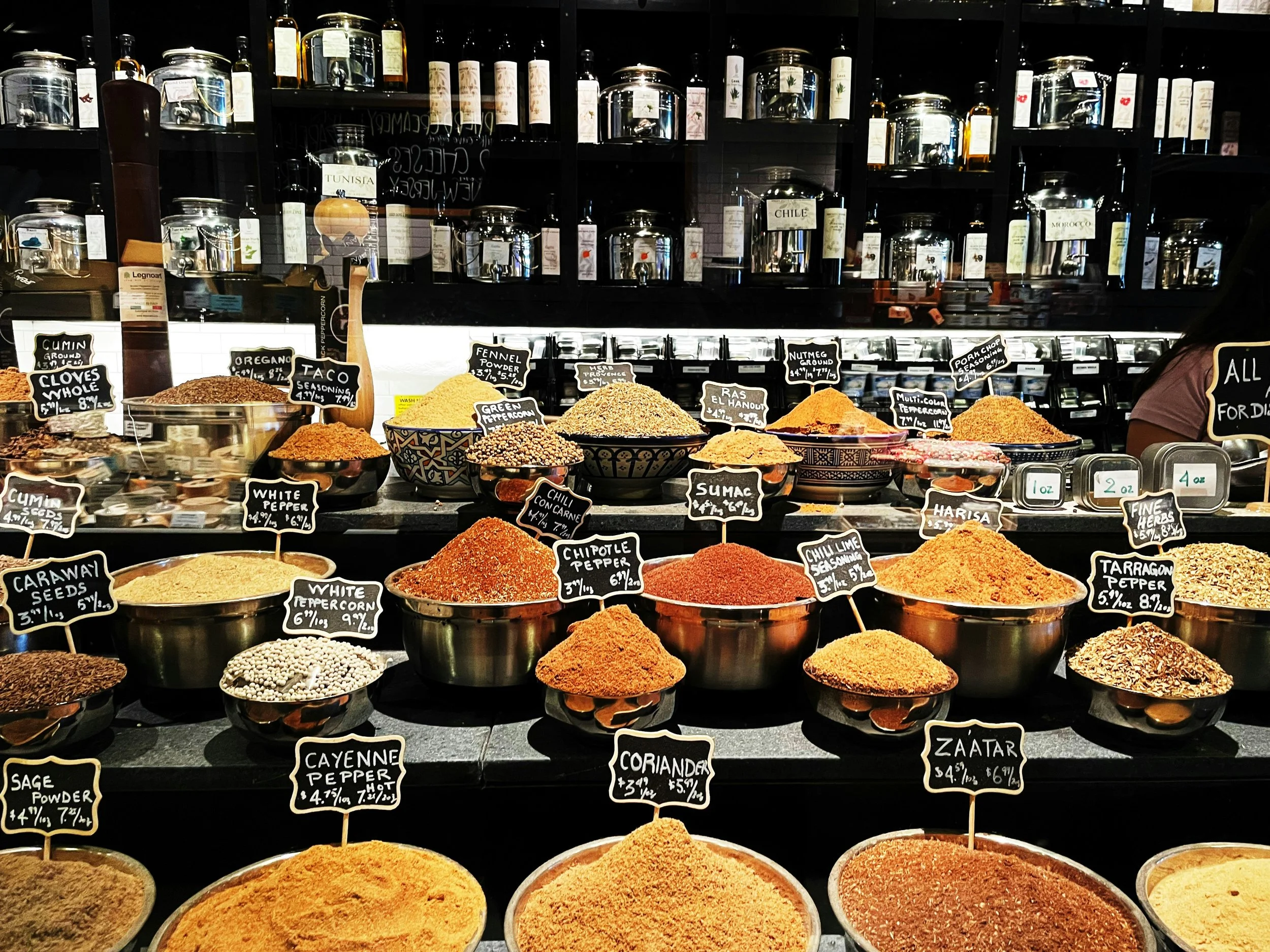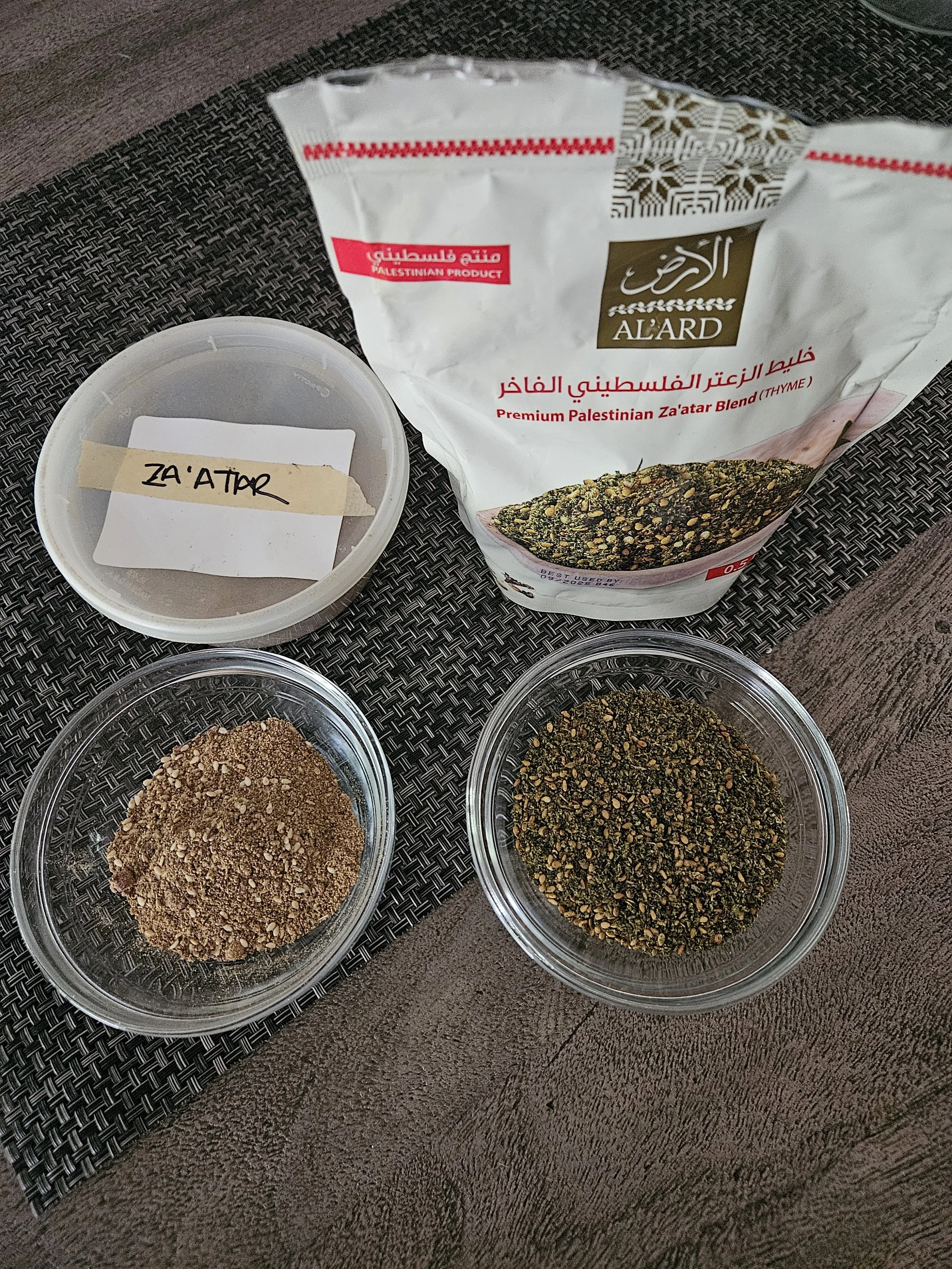Ingredient Spotlight: Za’atar – A Bold and Earthy Blend from the Middle East
If you've ever had a bite of warm pita dipped in olive oil and sprinkled with za’atar, you know just how magical this spice blend can be. At Copper & Thyme, I’m always exploring ways to bring global flavor to your table, and za’atar is one of those ingredients that instantly elevates everyday meals with minimal effort.
What is Za’atar?
Za’atar (pronounced ZAH-tar) is both the name of a wild herb native to the Levant and a traditional Middle Eastern spice blend made from that herb and other pantry staples. Most commonly, za’atar includes:
Dried thyme or oregano
Toasted sesame seeds
Sumac (for a citrusy, tart punch)
Salt
Some blends may also include marjoram, cumin, or coriander, depending on the regional and cultural variations. The flavor is herbaceous, slightly nutty, tangy, and savory all at once. It’s truly a beautiful balance that adds complexity without overpowering your dish.
Origins & Cultural Variations of Za’atar
Za’atar is more than just a spice blend—it’s a cultural staple deeply rooted in the culinary traditions of the Middle East, Levant, and North Africa. Its history dates back to ancient times, with references in biblical texts and traditional healing practices.
While “za’atar” typically refers to both the wild herb (similar to oregano or thyme) and the blend itself, its exact composition varies by region and family tradition. Here’s how different cultures make it their own:
Levantine Za’atar (e.g., Lebanon, Palestine, Jordan, Syria):
This is the most widely recognized version. It includes dried thyme or hyssop, sumac for tanginess, toasted sesame seeds, and salt. Often, dried oregano or marjoram is added to round out the herbal notes.Israeli Za’atar:
Similar to Levantine za’atar but sometimes includes a slightly sweeter or milder herb base. Israeli blends are often used with labneh (strained yogurt) or sprinkled on breads like challah or pita.Turkish Za’atar:
Turkish versions may include more robust spices such as cumin, fennel, or even dried mint. The texture is often coarser, and it’s commonly used to season meats or mixed with olive oil as a marinade.Egyptian Za’atar (sometimes known as “dukkah-style za’atar”):
In Egypt, “za’atar” can refer to a blend that combines dried herbs like thyme and oregano with crushed nuts (often hazelnuts or almonds), sesame seeds, cumin, and coriander. While dukkah is more commonly known, Egyptian za’atar shares its emphasis on texture and depth of flavor. It’s often enjoyed with bread dipped in olive oil, similar to traditional za’atar.
Each variation reflects the flavors and preferences of the region—some sharper and herb-forward, others nutty and earthy—but all share one thing in common: za’atar is a deeply loved and versatile flavor cornerstone of its cuisine.
As an example of the difference in blends, below is one based on an Egyptian-style recipe with warm spices, and another is the Palestinian version, with a fragrant blend of thyme, sumac, and sesame seeds. Each version brings something unique to the table: one more earthy and crunchy, the other tangy and herbaceous.
I purchased the Palestinian version from Yafa Halal (10703 Park Rd, Charlotte, NC 28210) if you want to buy and try some for yourself.
Comparison of Egyptian-style and Palestinian-style za’atar
Ready to try making your own za’atar at home?
Click the button below to download a PDF of the Egyptian-style Homemade Za’atar Spice Blend Recipe and start experimenting in your kitchen.
How to Use Za’atar in Your Kitchen
Za’atar is incredibly versatile and a must-have in any spice cabinet. Here are three easy, Copper & Thyme suggested ways to start experimenting:
1. Za’atar Roasted Carrots with Yogurt & Mint
Toss whole carrots with olive oil and za’atar, then roast until caramelized. Serve over a bed of whipped Greek yogurt, drizzle with honey, and top with fresh mint.
2. Za’atar Flatbread with Olive Oil & Feta
Brush store-bought or homemade flatbread with olive oil, sprinkle with za’atar, then bake until crisp. Add crumbled feta and arugula for a flavorful snack or appetizer.
3. Za’atar-Crusted Chicken Thighs
Rub bone-in chicken thighs with olive oil, garlic, lemon juice, and za’atar. Roast until golden and juicy. Serve with couscous or a simple chopped salad.
Man’oushe flatbread topped with olive oil and za’atar typical of Lebanese cuisine




